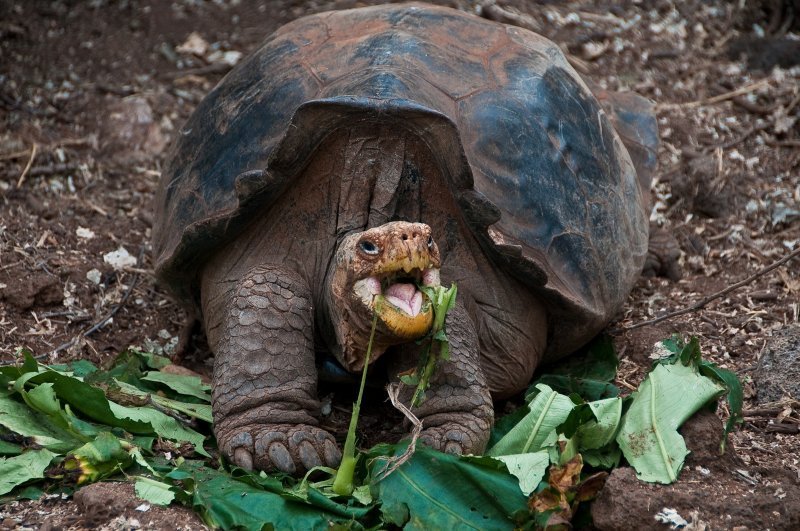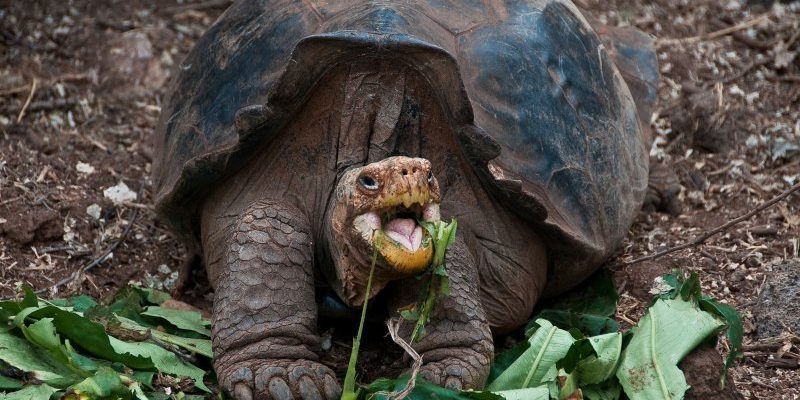
Galápagos tortoises are not only remarkable because of their size and longevity but also due to their unique adaptations in a tough environment. They have evolved to thrive on a range of vegetation found in the Galápagos Islands. So, what exactly do these tortoises eat, and how do they go about finding their food? Let’s dig into that and explore the diets and hunting techniques of these incredible reptiles.
The Diet of the Galápagos Tortoise
When it comes to diet, the Galápagos tortoise is labeled as a herbivore, meaning they primarily eat plants. They have a varied diet that changes based on their specific habitat and the season. Imagine having an all-you-can-eat buffet of different greens, cacti, and fruits, all tailored to your needs. That’s pretty much the life of a Galápagos tortoise!
Their diet consists of:
- Grasses: Galápagos tortoises love to munch on various grasses, especially during the wet season when they are more abundant.
- Cacti: These tortoises are known to eat the prickly pads of cacti, which are surprisingly nutritious and hydrating—a vital resource in their arid environment.
- Leaves and Fruits: They also enjoy large leaves and tasty fruits like guava, which provide essential vitamins and moisture.
During the dry season, the tortoises adapt their diet to what’s available. They may rely more on the tough, fibrous plants that are less appealing but still provide necessary nutrients. It’s a little like making do with what’s left in your fridge when you haven’t gone grocery shopping in a while!
How Galápagos Tortoises Find Food
Finding food isn’t as straightforward as it might seem, especially in a rugged environment like the Galápagos Islands. Galápagos tortoises have developed keen senses and behaviors to help them locate their next meal. Here’s how they do it:
- Sense of Smell: These tortoises have a strong sense of smell that helps them sniff out edible plants from a distance. Imagine walking into a bakery and catching a whiff of fresh bread—it’s like that, but with plants!
- Visual Cues: They also use their eyesight to spot greenery. Whether it’s a green patch in the distance or the vibrant colors of ripe fruit, they take full advantage of their surroundings.
- Exploratory Behavior: When searching for food, tortoises are known to wander and explore their territories, sometimes traveling several kilometers in a day!
Honestly, their foraging can look a bit clumsy at times, but it’s all part of their unique charm. They’re methodical in their search, taking their time to ensure they’re getting the nutrients they need.
Adaptations for Feeding
Galápagos tortoises come equipped with special adaptations that enhance their feeding efficiency. These adaptations are nature’s way of ensuring that they can thrive even in challenging environments. Here are a few key features:
- Beak Shape: Their beaks are strong and somewhat hooked, which makes it easier to tear leaves or prickly cactus pads. Think of it as having the perfect kitchen tool for the job!
- Slow Metabolism: Tortoises have incredibly slow metabolisms. This allows them to survive on low-nutrient diets without needing to eat constantly. They can go for long periods without food, which is super handy during dry spells.
- Large Body Size: Being larger compared to others allows them to store more fat and moisture. This helps sustain them during food shortages, much like a camel can go without water for days.
These adaptations help them not just to survive, but to thrive in an environment where many other animals may struggle to find food.
The Role of Water in Their Diet
Water plays a crucial role in the Galápagos tortoise’s diet. While they get moisture from the plants they eat, finding pure water is also essential. In many areas of the Galápagos, water can be scarce, especially during dry seasons. So, how do they manage?
They often take advantage of morning dew, drinking from puddles after the rain, and even picking succulent plants that have high water content. For these tortoises, every drop counts. If you think about it, it’s much like how we enjoy a refreshing drink on a hot day—it’s vital for their well-being.
Hunting Techniques? Not Quite!
You might be wondering about hunting techniques, and here’s the thing: Galápagos tortoises don’t hunt in the traditional sense. Instead, they’re foragers, and that’s where their unique charm shines through. Their method of finding food might not involve speed or stealth like other animals, but it’s all about patience.
They take their time to graze and explore, using their physical adaptations to get the best out of their food sources. There’s something almost meditative about watching a tortoise slowly moving from one plant to another, taking in the environment and savoring each bite.
Challenges in Their Feeding Habits
Despite their impressive adaptations, Galápagos tortoises face several challenges when it comes to finding food. Changes in their environment can dramatically affect their diet. Here are some major challenges:
- Invasive Species: Non-native plants and animals can outcompete local vegetation, making it difficult for tortoises to find their preferred food sources.
- Climate Change: Changes in weather patterns can affect the availability of water and food. Droughts can also lead to a decline in nutritious plants.
- Human Impact: Habitat destruction and pollution can limit their natural foraging grounds, impacting their overall health and survival.
These challenges highlight the fragility of the Galápagos ecosystem and the importance of conservation efforts. It’s crucial for us to do our part in protecting these unique creatures and their habitats.
Conservation Efforts and Future Outlook
Conservation efforts aimed at protecting the Galápagos tortoise are vital for ensuring their survival. Thanks to dedicated scientists and organizations, strides have been made to help these tortoises thrive. Here’s what’s happening:
- Ecosystem Restoration: Efforts are being made to restore native habitats and remove invasive species, allowing tortoises to have access to their preferred diets.
- Research and Monitoring: Ongoing research helps understand tortoise behaviors and population health, which is crucial for effective conservation strategies.
- Education Programs: Local communities are being educated about the importance of these tortoises and their role in the ecosystem.
By taking these steps, conservationists aim to create a sustainable future for the Galápagos tortoise, ensuring they’ll continue to wander the islands for generations to come.
In conclusion, the Galápagos tortoise is a remarkable creature with a fascinating diet and unique feeding habits. From munching on grasses and cacti to using their keen senses to navigate their environment, they embody resilience and adaptability. Understanding their diet is not just about appreciating their uniqueness; it’s also about recognizing the challenges they face and the importance of conservation efforts. The next time you think about these tortoises, you’ll know that their meal is a big part of what makes them so special!

